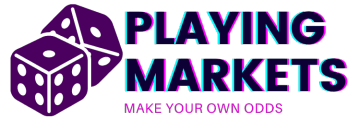What Is Accumulation? In trading and investing, accumulation is the act of acquiring more of an asset over a period of time, usually across the...
Market Definitions
Playing Markets
Stop Loss
What Is a Stop Loss Order? A stop loss is a type of order wherein a market buy or sell order is executed automatically if the asset reaches a...
Volume
What Is Trading Volume? Volume is the quantity of an asset that is trading over a specific time period. It can be measured in shares, contracts, or...
Resistance
What Is Resistance? In regards to price action, resistance is a price level (or price range) that provides opposition against upward movement. It...
Support
What Is Support? In regards to price action, support is a price level (or price range) that provides opposition against downward movement. It can...
Trend
What Is a Trend? A trend is the overall direction of an asset’s price of a period of time. A general increase in price is known as an uptrend while...
Downtrend
What Is an Downtrend? In trading and investing, a downtrend is a period of sustained price decreases. It is characterized by a period of successive...
Uptrend
What Is an Uptrend? In trading and investing, an uptrend is a period of sustained price increases. It is characterized by a period of successive...
Continuation
What Is a Continuation? A continuation is a resumption of trending price action following consolidation. In other words, it is when an uptrend or...
Reversal
What Is a Reversal? A reversal is a change in the direction of an ongoing trend. This could be a shift from an uptrend to a downtrend, or vice...
Unicorn Company
A term used by many in the financial world to describe a privately-owned startup with a valuation of more than $1 billion. The term was first used...
Retracement
A minor pullback or change in the direction of a stock, index, or other financial instrument. Retracements differ from reversals in the sense that...
